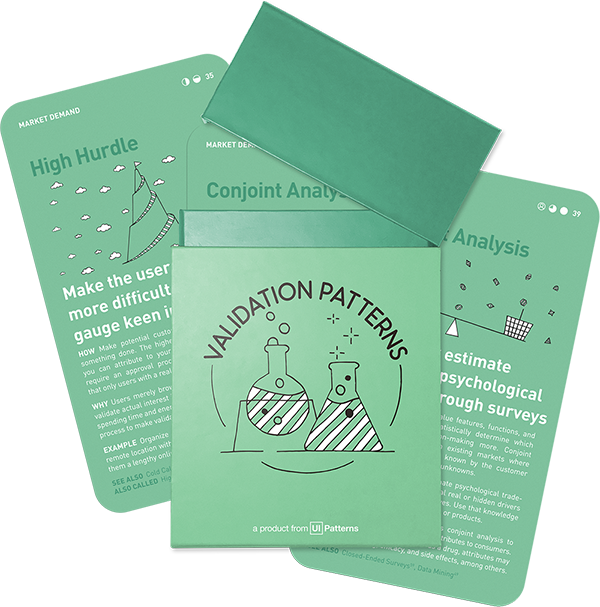How: Prepare tasks, questions, and background brief with great attention before sending them to remote respondents who will carry out your test while being video recorded or screen recorded, but also unmoderated and unsupervised only with the help of your initial brief. Search for respondents in relevant forums or use one of many online remote user testing services.
Why: Remote user tests can be conducted by users all over the world as long as an internet connection is available. With the right setup, they allow finding relevant respondents in your target audience fast and easily. As remote usability tests are unmoderated, many user tests can be conducted at the same time. This allows for rapid feedback from potentially hundreds of sources in a matter of hours rather than days.
Validating the solution
When trying to validate your product or solution, whether remote or in person, you are testing whether your product is solving the right problem in the most effective way. Most likely, you will not find perfect product-solution fit the first time around. That is OK and what to expect.
By iterating, tweaking, and reacting to your findings – pivoting or even shutting down if you have to - you will slowly, but steadily progress toward finding problem-solution fit.
When you are starting to see strong positive evidence from users in your target segment, consider problem-solution fit discovered and start moving on to test for market demand or willingness to pay.
Popular tools
The tools below will help you with the Remote User Testing play.
-
UserTesting.com
An unmoderated alternative to interviewing users by getting them to record their on-screen experience of using your product
-
UsabilityHub
A quick and fairly cheap way to get insights and reactions from a number of users about your prototype.
-
BetaList
A tool for scheduling Skype interviews with remote users.
-
Preely
An early-stage prototyping testing tool
Real life Remote User Testing examples
Every.org
Every.org improved donation conversions by 29.5% using remote user testing. They identified donation process issues through interviews, session recordings, and A/B tests, leading to a streamlined flow and added FAQs, enhancing user understanding and experience.
Source: 6 user testing examples to help you create better products
ElectricFeel
This company offers a software platform for managing fleets of shared electric bicycles and mopeds. They conducted remote user testing to streamline the process for new riders signing up on their app. This involved testing with fleet managers and iterating designs based on feedback, ultimately leading to an improved user experience.
Source: 5 Real-life usability testing examples & approaches to apply
A collection of 60 product experiments that will validate your idea in a matter of days, not months. They are regularly used by product builders at companies like Google, Facebook, Dropbox, and Amazon.
Get your deck!Related plays
- A Lean Approach To Product Validation by Smashing Magazine


